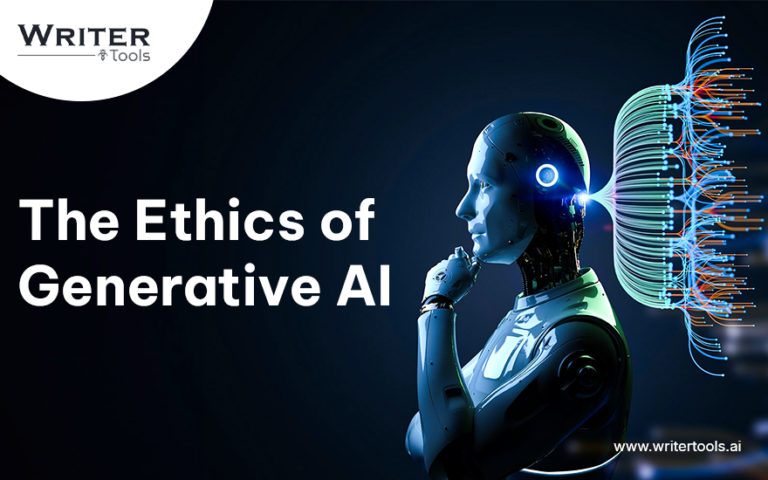Generative AI, a transformative branch of artificial intelligence, is reshaping how we create and interact with content. From crafting realistic images to composing music and generating human-like text, generative AI is revolutionizing industries. However, as with any powerful technology, its rapid adoption raises complex ethical concerns. This blog delves into the meaning of generative AI, its implications, and how to navigate its challenges responsibly.
What is Generative AI?
Generative AI refers to AI systems designed to create new content by learning patterns from existing data. Unlike traditional AI models that focus on recognizing patterns or making predictions, generative AI generates novel outputs such as text, images, or music. Popular examples include OpenAI’s GPT for text generation and DALL·E for image creation.
By understanding the meaning of generative AI, we can better appreciate its potential for creativity and its associated ethical dilemmas.
Key Ethical Challenges of Generative AI
1. Misuse and Misinformation
Generative AI can be misused to produce deepfakes, spread misinformation, or generate harmful content.
Example: Realistic deepfake videos or AI-generated fake news articles can manipulate public opinion and erode trust in media.
Mitigation Strategies:
- Using watermarking techniques to identify AI-generated content.
- Developing robust policies to regulate the use of generative AI in sensitive areas.
2. Intellectual Property and Copyright Issues
Generative AI systems often rely on vast datasets, some of which may include copyrighted materials. This raises questions about ownership and fair use when AI-generated outputs resemble existing works.
Example: AI-generated art may unintentionally replicate the style of copyrighted artwork, creating legal and ethical dilemmas.
Mitigation Strategies:
- Promoting transparency about the datasets used to train generative AI models.
- Implementing licensing frameworks that respect creators’ rights.
3. Bias and Discrimination
The data used to train generative AI models can carry inherent biases, leading to discriminatory or unbalanced outputs.
Example: A generative AI tool that creates job descriptions may inadvertently use biased language, excluding certain groups.
Mitigation Strategies:
- Conducting regular audits to ensure the data is representative and unbiased.
- Incorporating diverse datasets during training to minimize biases.
4. Environmental Impact
The computational power required to train and deploy generative AI models significantly impacts the environment, consuming large amounts of energy.
Example: Training large-scale generative AI models like GPT-4 can use as much energy as several households over a year.
Mitigation Strategies:
- Developing energy-efficient AI algorithms.
- Investing in renewable energy sources for data centers.
Example: If a generative AI system creates offensive content, who is responsible for the repercussions?
Mitigation Strategies:
- Establishing legal frameworks to define responsibilities clearly.
- Encouraging developers to incorporate safeguards against harmful outputs.
The meaning of generative AI lies not just in its ability to create but in its potential to transform industries and society. While its applications are exciting, responsible use is crucial to mitigate ethical risks. By addressing concerns around misuse, intellectual property, bias, environmental impact, and accountability, we can harness the full potential of generative AI for the greater good.
Let us embrace generative AI as a tool for innovation, but with vigilance, integrity, and a shared commitment to ethical practices.

